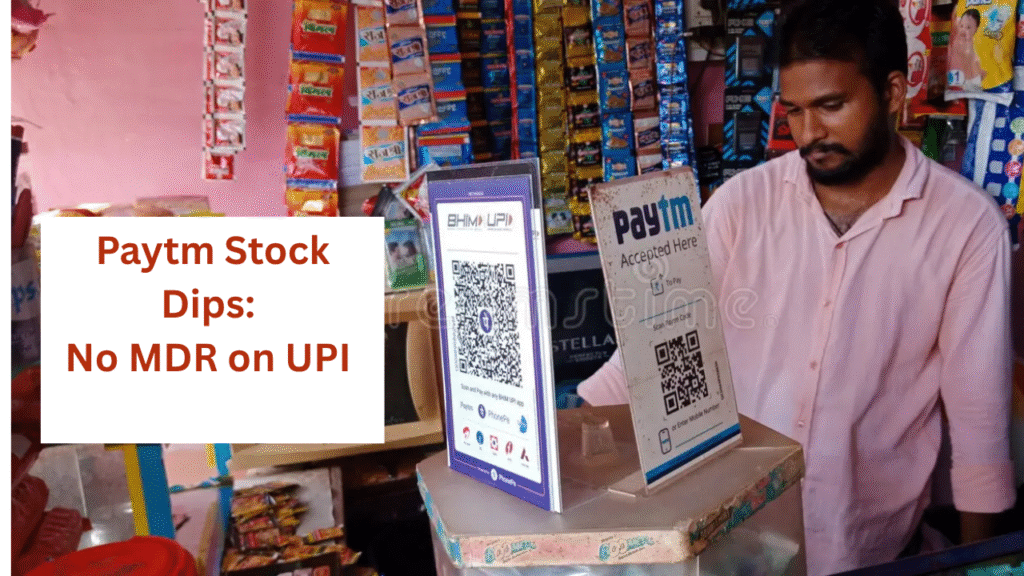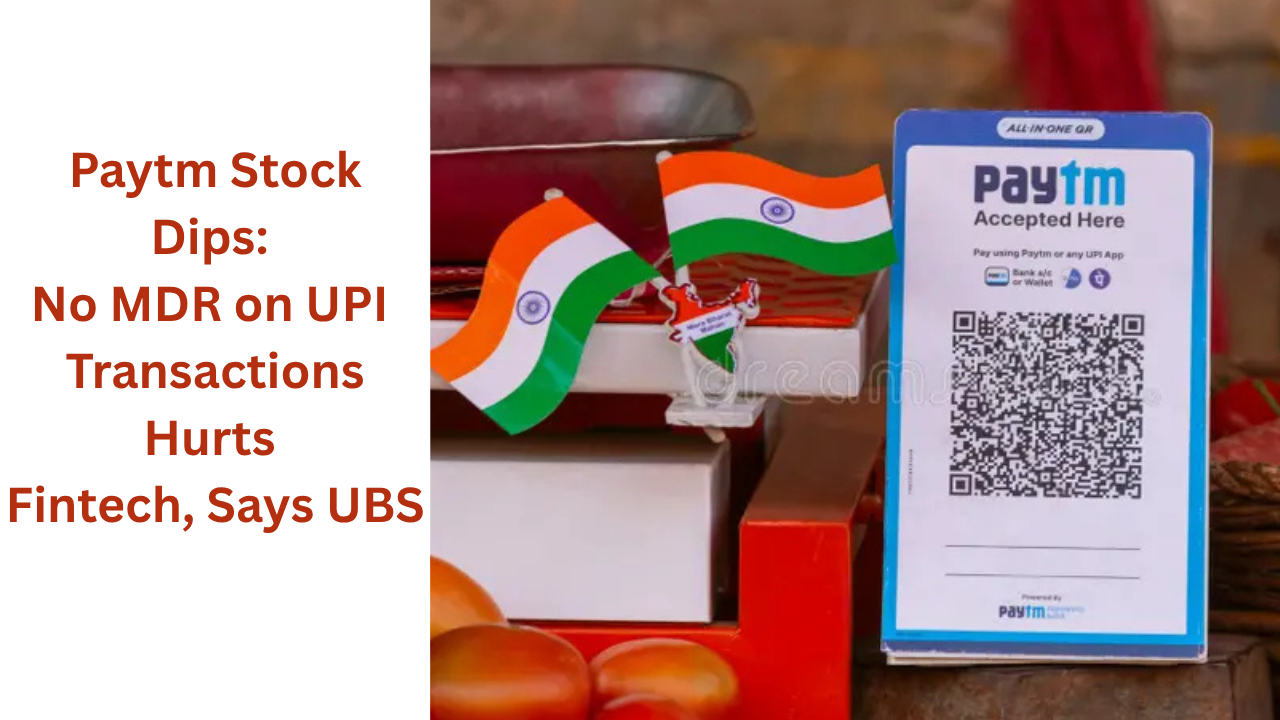In a major setback for the fintech giant Paytm, the Finance Ministry of India has cleared rumors of implementing Merchant Discount Rate (MDR) charges on UPI transactions. This statement emerged on June 11, 2025, which subsequently saw a sharp fall in Paytm’s stock, which fell over 8% to ₹882.75 by 9:15 AM on June 12, 2025. Global Brokerage firm UBS said in a report recently that the possible delay or non-introduction of MDR is sentimentally negative for Paytm as it restricts its monetization prospects in India’s highly competitive digital payments space. Fintech India faces new headwinds as this decision curtails potential revenue for UPI-based platforms.

The Importance of MDR for Paytm
MDR, or merchant discount rate, is the fee paid to the merchant by banks or payment service providers related to digital transactions, such as UPI or card transactions. In 2020, the government had waived MDR on UPI transactions and RuPay card transactions to promote the adoption of digital payments under its Digital India scheme. This initiative undoubtedly accelerated UPI’s growth, allowing it to grow into a global leader in terms of digital transactions with billions of monthly transactions being processed, at the same time, it also reduced monetization of UPI for companies like Paytm.
The lack of MDR has created an ongoing profitability hurdle, which is also supported by UBS in its note on One97 Communications, Paytm’s parent company. The brokerage clearly demonstrated that the lack of MDR or an increased incentive could be a risk of 10% downside to Paytm’s adjusted EBITDA for FY26/27.
UPI Report from the Finance Ministry statements
The Finance Ministry call the reports about the MDR on UPI as being “completely false, baseless and misleading” and stated the government will maintain free UPI transactions for users and merchants. Their statement was meant to dispel misinformation that caused confusion for the citizens. The government continues to prioritize zero MDR for the sake of accessibility and financial inclusion for very small merchants and users, while also discounting the possibility for merchants and consumers to be charged a convenience fee to use UPI. That being said, this policy stance mitigates the monetization potential for fintechs like Paytm that rely primarily on transaction volume through UPI.

Paytm’s Reaction to the Stock Market
Paytm’s share price was severely impacted following the ministry’s clarification with investors clearly disappointed at the lost chance for MDR driven revenues. By 9:15 AM on June 12, 2025, the stock was trading down 8.09% at ₹882.75 from its recent 13-month high of ₹950. UBS, retaining a ‘Neutral’ rating with a ₹1,000 target price, commented that without MDR, the company will be unable to enhance its payment margins. The brokerage estimated MDR or increasing incentives could add a 1 basis point increase to Paytm’s net payment margin, without which profit margins are likely to remain highly constrained.
Broader Implications for Fintech India
The government’s decision to leave UPI free of an MDR charge is a double-edged sword. It is great for promoting adoption of UPI and Digital India, but it is difficult for fintech firms like Paytm, Phone Pe and Mobikwi that are trying to establish sustainable revenue. The Payments Council of India had previously urged the government to initiate a nominal 0.3% MDR charge for large merchants to address fairly clear sustainability issues, with estimates of the government’s zero-MDR policy costing the ecosystem an estimated ₹10,000 crore per annum.! The government’s firm position has effectively put a brake on these expectations in the short term forcing UPI fintechs to focus on alternative monetization models like merchant lending and other value-added services.
UBS’s Outlook on Paytm
UBS is cautiously optimistic about Paytm’s long-term outlook, despite negative sentiment related to MDR. UBS raised its target price to ₹1,000 based on strong cost discipline and growth in merchant lending, which increased 13% quarter-on-quarter. Paytm’s merchant base increased to 44 million with a 0.7 million net device addition, which supports strong penetration. However, UBS reiterated that revenue growth rather than cost structure optimization will be the next phase in Paytm’s recovery. The continued absence of MDR is a very significant hurdle to reaching that objective and may cap its ability to scale profitability in the UPI ecosystem.

Conclusion: A Difficult Path Ahead for Paytm
Tackling MDR charges on UPI transactions from the Finance Ministry will impede Paytm’s ability to monetize, according to UBS. While the zero-MDR ruling ethe digital payment ecosystem in India, it denies revenue generation opportunities for fintech. Investors and merchants will be watching closely how Paytm responds, monitoring specific growth drivers like lending and new service offerings. For now, the fintech India industry has a difficult task of balancing accessibility and profitability.

